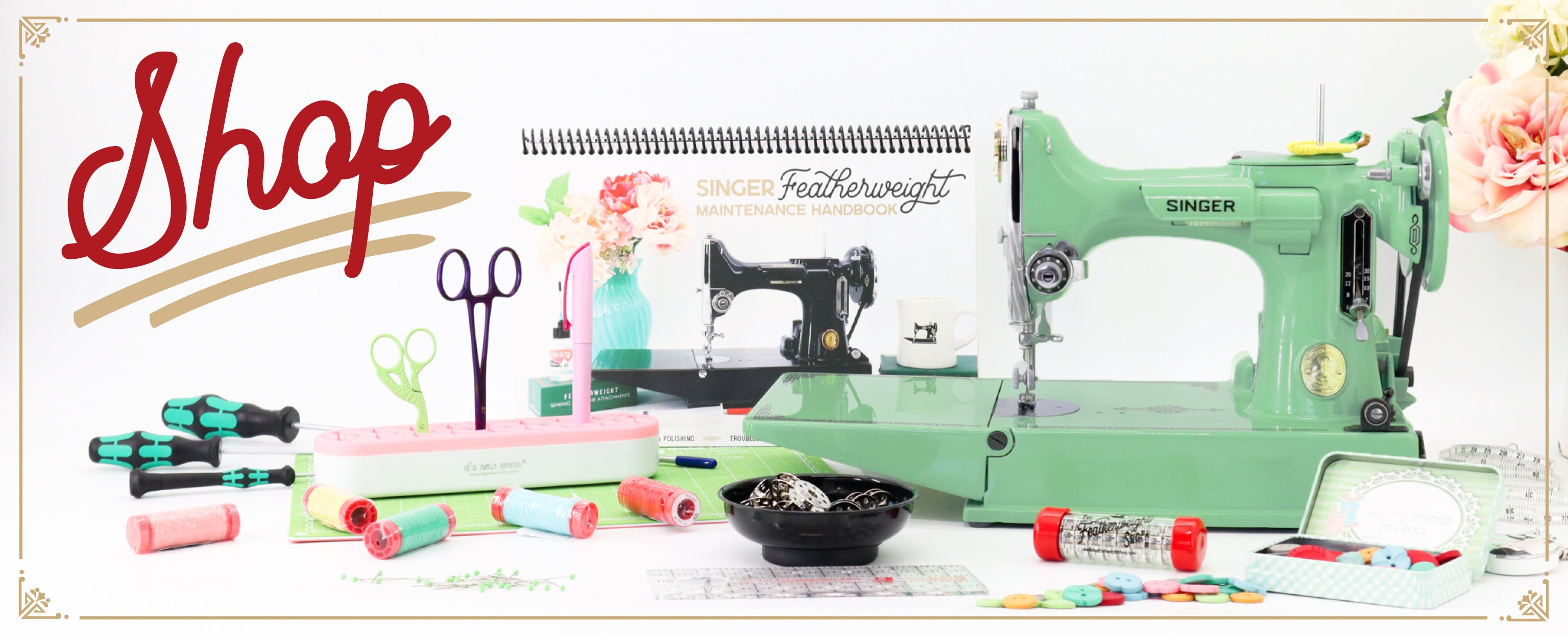Restore Along Part 3: More Disassembly
Thanks for joining us in Part 3 of Tulip's Restore Along! For those of you who are just joining us, this Featherweight (endearingly named Tulip) is in the process of a full restoration. Julia and her husband, Mark, found and rescued Tulip in a small antique shop in Kentucky and began the journey to restore her. We are lucky enough to join in on the fun and follow along on Julia's adventure. You can catch up on her story with the first two Restore Along blog posts below:
Restore Along Part 1: The Introduction of Julia and Tulip
Restore Along Part 2: Stripping Down Tulip
After Julia and Mark picked up Tulip in Kentucky, they researched her birthday and found out she was 65 years old! (Tulip came home with Julia and Mark in May of 2019.)

In this third section of the Restore Along, Julia is focusing on preparation, soaking, and detail work. Because much of today's work was relegated to soaking (and waiting while soaking) , this post will feel a bit shorter than the others.
Julia's go-to soaking solution is sewing machine oil. (Please make a note of the difference between sewing machine oil and other oils such as 3-in-1 oil or WD-40. You can learn more about correct sewing machine maintenance oils to use here.)

Sewing machine oil in a bottle with directive long spout ~ learn more about the appropriate uses for it here.

Tulip's Rocker Arm Shaft before removal. The shaft ends are always visible on both ends of the machine.

Julia was able to tap out the feed dog rocker arms.

This is the connecting link to the feed dog arm. These two pieces are not screwed together at all.

Julia forgot to remove two set screws on the left side of the rocker arm shafts before trying to tap out the bushings!

EDIT: Julia learned from her husband that the word “swedging” is actually flaring the end of a piece of metal with a swedge, but she still likes the term. To her it’s swedging with a swedge.. like hammering with a hammer..;) She wanted to clarify, though, to make the correct use of the word known.
Julia also indicated that she attempted using non-pumice Gojo on a few small areas under the machine to try and remove old oil, but she was not impressed with the results.

A 9/16" wrench was used to remove the retaining nut on the toggle switch. Be very careful when removing the original bakelite thumb nut that covers the toggle switch, however. Being of vintage bakelite they can become quite brittle and break easily.

Bobbin Winder parts

Toggle switch and bobbin winder tension bracket location

Julia is still puzzled by the missing piece out of the base of her machine (back under the motor area), but it will forever add to the character and fun mystery to Tulip the Featherweight.

Saving for another day... Julia is not looking forward to getting these badge rivets out!





